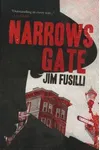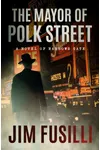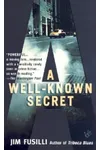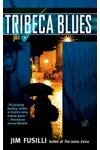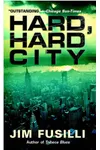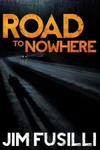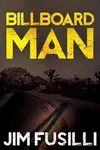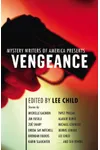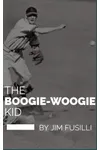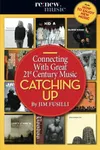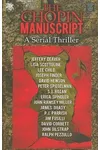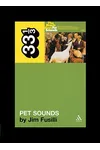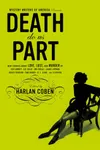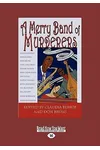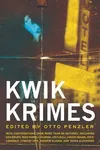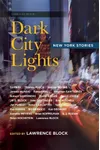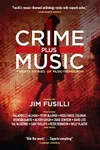Picture a Hoboken-born storyteller who crafts gritty crime novels and pens soulful music reviews—meet Jim Fusilli! With a knack for weaving hard-boiled mysteries and a passion for rock and pop, Fusilli has carved a unique niche in American literature. His Terry Orr series captures the pulse of post-9/11 New York, while his music criticism for The Wall Street Journal resonates with melody and meaning.
From the shadowy streets of Narrows Gate to the emotional depths of Brian Wilson’s Pet Sounds, Fusilli’s work blends raw storytelling with cultural insight. Let’s dive into the life, works, and lasting impact of this multifaceted author.
The Making of Jim Fusilli
Born on July 17, 1953, in Hoboken, New Jersey, Vincent James Fusilli Jr. grew up in a vibrant Italian-American community that would later inspire his fiction. He studied English at St. Peter’s College, where he sharpened his critical eye as a music reviewer for the student newspaper, Pauw Wow. After graduating in 1975, Fusilli dove into journalism, writing a weekly music column for The Jersey Journal and contributing to The Record. His early career also included a stint with the Teamsters Local 560, grounding him in the working-class ethos that permeates his novels.
Fusilli’s path took a corporate turn in the 1980s when he joined Dow Jones, followed by a 12-year role as vice president of corporate communications at Sanofi, working alongside fashion icons like Oscar de la Renta. Yet, his heart remained with storytelling and music, leading him to become The Wall Street Journal’s first rock and pop critic in 2009, a role he held until 2018.
Jim Fusilli’s Unforgettable Stories
Fusilli’s debut novel, Closing Time (2001), introduced private investigator Terry Orr, a grieving father navigating New York’s Tribeca district. Published just before the 9/11 attacks, it was the last fictional work set in the city pre-tragedy. Its sequel, A Well-Known Secret (2002), poignantly explored the attacks’ impact on Manhattan’s residents, earning praise for its emotional depth. The series continued with Tribeca Blues (2003) and Hard, Hard City (2004), the latter named Mystery Ink’s Novel of the Year for its noirish intensity and evolving characters.
Narrows Gate (2011), a sprawling epic set in a fictionalized Hoboken, channels the spirit of The Godfather with its tale of mobsters, crooners, and wartime intrigue. Praised by George Pelecanos as “equal parts Ellroy, Puzo, and Scorsese,” it was followed by The Mayor of Polk Street (2022). Fusilli’s young adult novel, Marley Z and the Bloodstained Violin (2008), showcases his versatility, spinning a smart mystery around a stolen instrument. His nonfiction work, Pet Sounds (2005), a heartfelt tribute to the Beach Boys’ classic album, was translated into Japanese by Haruki Murakami, cementing his music-writing legacy.
Fusilli’s style is gritty yet lyrical, blending hard-boiled crime with deep character studies. His settings pulse with authenticity, reflecting his Hoboken roots and love for New York’s underbelly. Whether crafting short stories for anthologies like Crime Plus Music or hosting the Writers at Work podcast, Fusilli’s voice remains sharp and evocative.
Why Jim Fusilli Matters
Jim Fusilli’s work bridges the gap between crime fiction and cultural commentary, offering readers a lens into America’s urban heart and musical soul. His Terry Orr series redefined post-9/11 noir, capturing a city in recovery with raw honesty. Narrows Gate and its sequel stand among the finest mob sagas, earning accolades for their historical richness and emotional heft. As a music critic, Fusilli elevated pop journalism, championing artists from Bruce Springsteen to Miles Davis with erudition and warmth.
His influence extends to the mystery community, where he’s a generous mentor, editing anthologies like Brutal & Strange and engaging with fans at conventions like Bouchercon. Fusilli’s ability to toggle between genres and mediums makes him a storyteller for our times, inspiring writers and readers to find beauty in the gritty and the profound.
- Birth Date: July 17, 1953
- Key Works: Closing Time, Narrows Gate, Pet Sounds
- Awards: Hard, Hard City (Mystery Ink Novel of the Year, 2004); Macavity nomination for Narrows Gate
Snag Closing Time or Narrows Gate and dive into Jim Fusilli’s thrilling world of crime, music, and heart!
